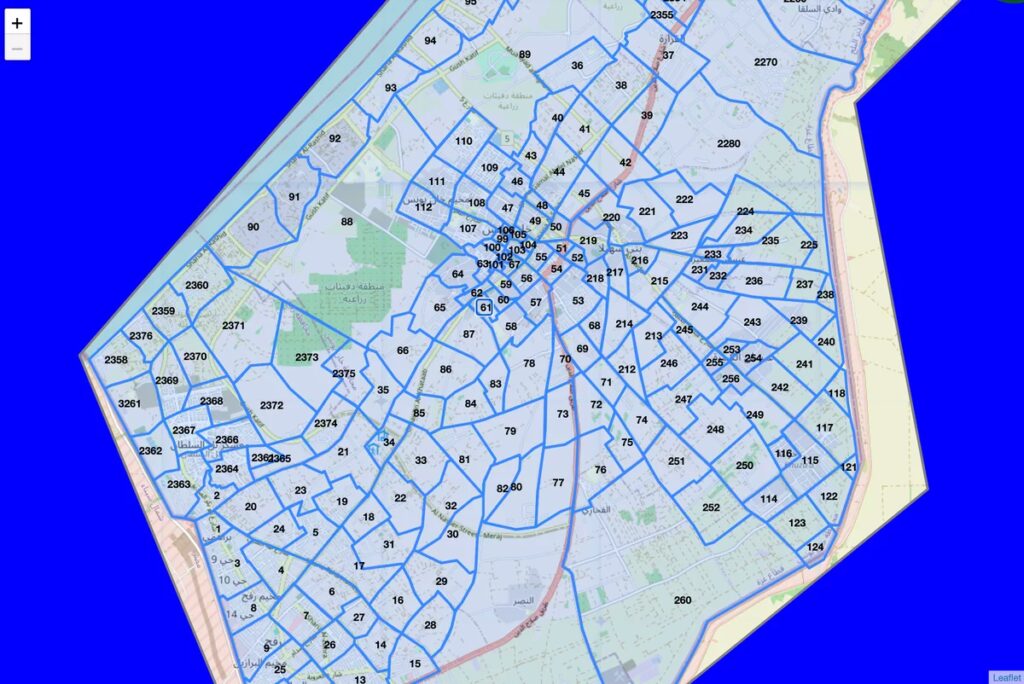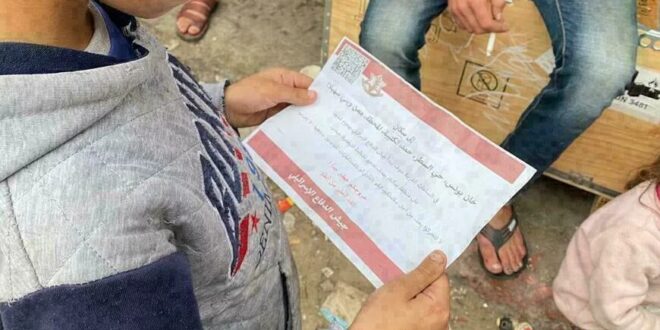Nearly 1.9 million Palestinians have fled their homes in the Gaza Strip in two months of war between Israel and Hamas, according to the United Nations. That’s 85% of the population in the besieged enclave.
They are being squeezed into smaller and smaller areas — as Israel urges Palestinians to escape its air-and-ground campaign, which has left more than 16,000 dead in Gaza, according to health officials in the Hamas-run territory.
The U.S. demanded Israel declare safe zones to minimize civilian casualties from Israeli airstrikes in response to the surprise Oct. 7 Hamas attack that killed 1,200 people, mostly civilians, according to Israeli officials. But Palestinians and international aid groups say those zones have been inadequate, and provide no guaranteed shelter to residents who escape.
“There is no ‘safe’ zone, the entire Gaza Strip has become one of the most dangerous places in the world,” the United Nations agency for Palestinian refugees, UNRWA, said on X (formerly Twitter) on Wednesday.
Israel’s former attorney general, Avihai Mandelblit, says he thinks Israel’s intention is to ensure civilians escape harm’s way, despite the humanitarian crisis associated with urging mass evacuations to Gaza’s south.
“I’m not saying it is nice being there, but the only thing that we try to do is to protect their lives. If they’re going to stay in Khan Younis in such an intensity of combat, then lots of civilian lives will be lost. The most important thing — that they will not die,” Mandelblit said, referring to Gaza’s second-largest city where Israel’s bombardment is focused now.
Here is how Israel is notifying Gaza residents to flee — and a glimpse at the confusion, chaos and mass displacement that have resulted.
Israel’s “Evacuation Zone Map”

As fighting resumed in Gaza last week after a temporary pause, the Israeli military issued a statement saying that it was “providing information to residents of the Gaza Strip on movement for their safety in the next stage of the war.”
“This divides the territory of the Gaza Strip … according to recognizable areas to enable the residents of Gaza to orient themselves and understand the instructions, and to evacuate from specific places for their safety, if required,” the statement said.
It then included a link to an Israeli army website in Arabic, featuring what Israel said was an interactive “Evacuation Zone Map.”
The map came about as a result of the Biden administration’s insistence that Israel minimize civilian casualties. Secretary of State Antony Blinken, after a visit to Israel and the occupied West Bank, called on Israel to declare designated safe zones.
But the map proved difficult to navigate on computers and the cellphones that most Palestinians use. Residents are asked to locate their neighborhood on a numbered grid, memorize its zone number and then “track and follow the instructions of the [Israeli military] through various media outlets and obey them.”
Many residents in Gaza have little electricity or internet service, making it difficult to access the map. And those who have identified their zone according to the map have received mixed messages from both the Israeli military and other residents about whether their zone had been ordered to evacuate.
Heba Usrof, who is from Khan Younis, where heavy fighting is taking place, tells NPR she looked at the map Israel provided and her zone was not listed for evacuation.
“My house was in zone 55. The last zone on the evacuation list was 54,” says 29-year-old Usrof.
“Right after the truce was over, they hit right next to our house,” Usrof says.
“They hit again the following day,” she says. “An Israeli soldier contacted our neighbor, instructing him to evacuate and tell everyone else to do the same.”
So Usrof moved south to Rafah, near the border with Egypt, where she says she’s now sharing an apartment with 60 other people.
The Israeli military said Hamas on Wednesday fired rockets toward Israel from rocket launchers near tents where civilians were sheltering in Rafah.
“The Hamas terrorist organization abuses the people of Gaza, utilizing them for its acts of terror. Hamas cynically embeds itself in civilian infrastructure, schools, residential areas, near United Nations facilities and even in humanitarian zones — using the civilians as a human shield,” the military said in a statement.
Israeli military social media posts
#عاجل سكان قطاع غزة، جيش الدفاع يعمل بقوة ضد حماس والمنظمات الإرهابية في قطاع غزة وبشكل خاص في منطقة خان يونس.
فيما يلي عدة تعليمات عاجلة:
⭕️القتال والتقدم العسكري لجيش الدفاع في منطقة خان يونس لا يسمحان بتنقل المدنيين عبر محور صلاح الدين في المقاطع الواقعة شمالي وشرقي مدينة… pic.twitter.com/nKC6YoEXG5
— افيخاي ادرعي (@AvichayAdraee) December 5, 2023Israeli military Arabic spokesman Avichay Adraee has been posting information — along with videos aimed at persuading Palestinian viewers that Hamas was responsible for their suffering in the war — on X and Facebook since the war began, instructing civilians to flee.
In this post on X on Tuesday, he said the military was operating in the Khan Younis area, and warned that a main north-south road was a combat zone. He said Israeli forces would suspend military activities in a neighborhood of Rafah until 2 p.m.
Adraee’s first announcement declaring a safe passage out of northern Gaza in early November was followed by another announcement the following day: The safe passage was rendered unsafe by Hamas gunfire, he said.
Many Palestinians in Gaza say they have been following Adraee’s Arabic-language announcements to try to make sense of Israel’s changing directives.
Israeli warplanes are dropping flyers
Israeli warplanes are also dropping flyers on neighborhoods, with directions to either flee or seek shelter. This isn’t the first time residents of Gaza have experienced this kind of warning — in 2014, a similar tactic was used ahead of an Israeli incursion into the Gaza Strip from the north and again in 2021.
Mustafa, who only gave his first name because he was criticizing Hamas and feared retaliation, fled with his family and their belongings, from northern Gaza to Khan Younis 20 days ago, and then to Rafah on Tuesday.
“The Israelis told us to go south. We came here and found no place to go. We are all in the streets,” he told NPR. “Hamas should have secured the people, before doing this. They should have secured the people, and secured a place for the people.”
His young son held up a flier that had rained down on them earlier in the week. NPR translated from Arabic into English below:
To the residents of Khan Younis, neighborhoods of Al-Sater, Hamad, Al-Katiba, Al-Mahatta, Maan and Bani Suheila!
In the coming hours, the Israel Defense Forces shall commence a strong attack on your location of residence with the goal of destroying the Hamas terrorist organization.
Do not move anymore, for your own safety, stay in the shelters or hospitals that you are currently in. Do not exit.
Your exit is very dangerous!
He who has warned is not at fault.
Israel Defense ForcesIn the past few days, many cellphones in Rafah flashed with messages on their screens calling on people to evacuate from Khan Younis, as a “dangerous battle” was expected:
Emergency Warning: Highest Level
The Khan Younis area will witness a dangerous battle in the coming hours, stay awayThe Israeli military says it has sent out approximately 15 million text messages, 12 million recorded cell phone messages and made more than 40,000 personal phone calls to residents of Gaza informing them when and where to evacuate.
Internet and cellphone service have been cut repeatedly in Gaza since Oct. 7. Israel, which maintains a blockade on Gaza, has declined to answer NPR’s request for comment on whether these communications cuts are deliberate.
The robocalls have been confusing to residents. NPR spoke to several people who received calls from the Israeli military listing zones to evacuate that weren’t their neighborhood.
It wasn’t clear whether they should leave. Many decided to leave anyway.
 Eurasia Press & News
Eurasia Press & News




